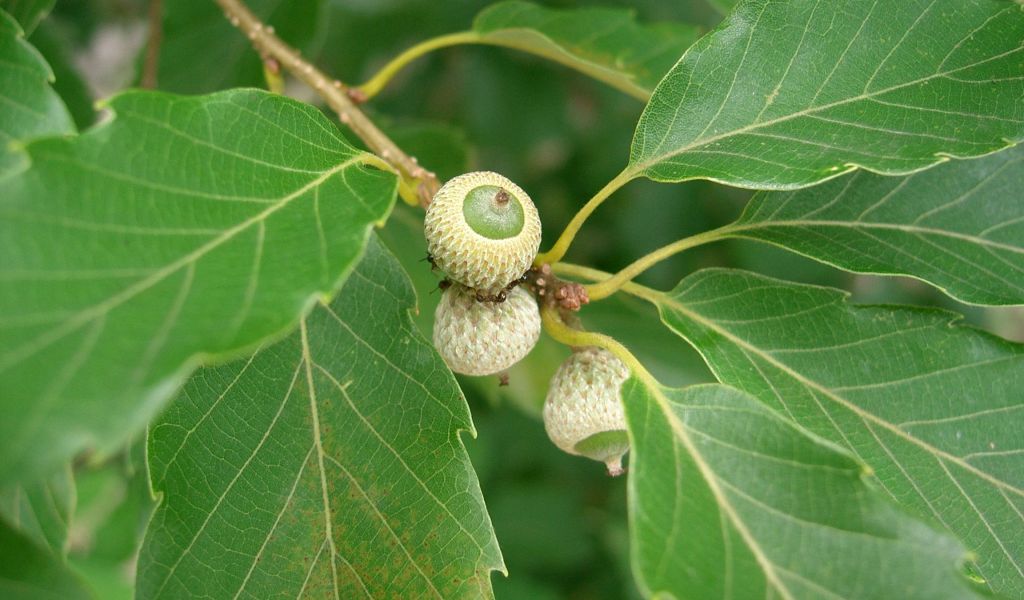ໄມ້ກໍ່ແຄະ / Konara Oak Tree
APA 6th ed. ໄມ້ກໍ່ແຄະ / Konara Oak Tree. (2021, July 23). Retrieved from https://www.phakhaolao.la/kb/0000226
MLA 8th ed. ໄມ້ກໍ່ແຄະ / Konara Oak Tree. Pha Khao Lao, 23 July 2021, https://www.phakhaolao.la/kb/0000226.
Chicago 17th ed. Pha Khao Lao. 2021. "ໄມ້ກໍ່ແຄະ / Konara Oak Tree." Published July 23, 2021. https://www.phakhaolao.la/kb/0000226.

Japanese: konara
Eng: Bao li
Trees to 25 m tall, deciduous. Leaves subsessile to petiolate; petiole to 3 cm, glabrous or glabrescent; leaf blade narrowly elliptic-ovate, ovate-lanceolate, or obovate, (5-)7-17 × (1.5-)3-9 cm, thinly leathery, with adherent single hairs when young, abaxially glabrous or occasionally stellate tomentose, base cuneate to nearly rounded, margin glandular serrate, apex acuminate to acute; secondary veins 7-12 on each side of midvein. Female inflorescences 1.5-3 cm. Cupule cupular, 5-8 mm × 1-1.2 cm, enclosing 1/4-1/3 of nut; bracts triangular, adherent, margin pilose. Nut ovoid to ovoid-globose, 1.7-2 × 0.8-1.2 cm; scar 5-6 mm in diam., flat; stylopodium ca. 1 mm in diam.
The roasted seed of many Quercus species has been used as a coffee substitute. Leaves - cooked. A famine food when all else fails. Seed - cooked, highly nutritious. The seed is usually cooked before eating, though it can also be eaten raw. It can be eaten whole, though it is more commonly dried, then ground into a powder and used as a thickening in stews etc or mixed with cereals for making bread. Quercus (oak) species are used in the traditional medicine of many cultures, being valued especially for their tannins. Various parts of the plant can be used, most frequently it is the leaves, bark, seeds, seed cups or the galls that are produced as a result of insect damage. A decoction or infusion is astringent, antibacterial, antifungal, antiseptic, styptic and haemostatic. It is taken internally to treat conditions such as acute diarrhea, dysentery and haemorrhages. Externally, it is used as a mouthwash to treat toothache or gum problems and is applied topically as a wash on cuts, burns, various skin problems, haemorrhoids and oral, genital and anal mucosa inflammation. Extracts of the plant can be added to ointments and used for the healing of cuts.
